Text
Apple iPad 6th-generation review: The tablet to buy
Last month, Apple (AAPL) CEO Tim Cook took the stage at the Lane Tech College Prep High School to lay out his company’s plans to take over the education technology market. And the key to Apple-powered classrooms, Cook explained, was the iPad.
Not just any iPad would do, though. Which is why Cook and company debuted a new slate that packs a more powerful processor and Apple Pencil stylus compatibility, but costs the same $329 as the 5th-generation iPad.
But the 6th-generation iPad isn’t only meant for students and teachers. It’s also the company’s new mainstream consumer slate. In other words, the best tablet you can buy just got a lot better.
More of the same … in a good way
The 6th-generation iPad looks and feels exactly the same as the 5th-generation model. The slate is still 1-pound, still 0.29 inches thick and still easily fits in your bag. The company basically replaced the iPad’s guts and called it a day. And that’s fine by me.
Even the 9.7-inch Retina display is the same as last year’s offering, which is actually a bit of a bummer, as the iPad mini 4’s screen is fully laminated and has an anti-reflective coating. Both of those features are missing from the 6th-generation iPad.
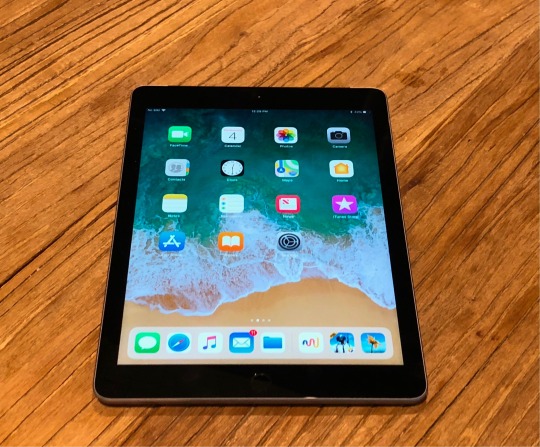
The 6th-generation iPad doesn’t get the iPad Pro’s upgraded display, but it still looks great.
The tablet’s 8-megapixel rear camera is also a carryover from the 5th-generation iPad, which isn’t quite as sharp as the iPad Pro’s 12-megapixel rear camera, but matches up with the iPad mini 4’s.
If Apple raised the price of this iPad, I’d be questioning its decision to keep so many aspects of the tablet the same. But since the company is still charging $329, which is a solid price, it’s not really an issue.
Different where it matters
What makes Apple’s decision to maintain the size and weight of the iPad especially interesting is the fact that this slate packs the same A10 Fusion processor found in both the iPhone 7 and iPhone 7 Plus. In order to do that, Apple told me, the company had to build a completely new logic board.
The A10 chip allows for the use of augmented reality apps. One such app Apple offered up was Froggipedia. The app allows users to set a virtual frog down on a flat surface and interact with it using the iPad. A dissection tab even lets you dissect a digital frog without having to deal with the awful smell of the real thing.

The base iPad now gets Apple Pencil support.
It’s not that the 5th-generation iPad was underpowered. The tablet had more than enough oomph to tackle any task you threw at it. But if Apple wants to ensure its 6th-gen tablet can keep up with new apps and updates, it needed to bring along the faster chip.
The 6th-generation iPad is also the first non-Pro iPad to offer support for the Apple Pencil stylus, and packs all of its features including its impressive pressure sensitivity and tilt functionality. Using the Pencil on the 6th-generation iPad is every bit as flawless as it is on the iPad Pro. The stylus’ tip glides across the tablet’s display with ease. It’s not quite a pen and paper, but then, nothing else is.
The vast majority of consumers are unlikely to purchase the $99 Apple Pencil. I’m sure it’ll be great for graphic artists and their ilk, but for the average person it’s an expensive add-on that they won’t use much.
The Pencil’s real value is in the classroom, where students and teachers can write directly on the slate to take notes, annotate articles and grade quizzes. Still, even with the $89 student pricing option (the iPad is also reduced to $299 for students and teachers), the Pencil might be a tad bit expensive for classrooms with younger pupils who are bound to misplace the stylus.
To alleviate those concerns, Apple teamed up with Logitech to create the Logitech Crayon, a $49 Apple Pencil alternative. The Crayon offers many of the Apple Pencil’s features including its tilt functionality but sacrifices pressure sensitivity.
Compared to the iPad Pro
So, if the 6th-generation iPad offers Apple Pencil capabilities, what’s the difference between it and the iPad Pro? A lot, actually. First off, the 12.9-inch and 10.5-inch iPad Pros cost significantly more than the 6th-generation. The base 10.5-inch carries a $329 premium over the iPad tablet, and for good reason.
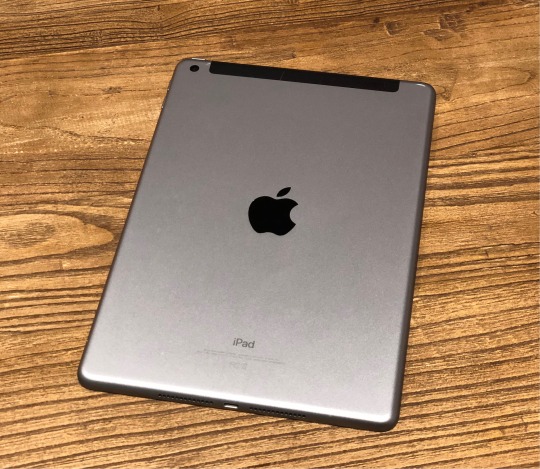
The 6th-generation is physically identical to the 5th-generation model.
Not only are the Pros’ screens larger than the 6th-generation iPad’s panel, they are also fully laminated, have anti-reflective coatings, use Apple’s ProMotion and True Tone technologies and feature wide color capabilities. Put the 6th-generation iPad next to the Pro and you’ll immediately notice the difference. The Pro simply looks cleaner and more colorful. The 6th-generation is certainly no slouch, but the Pro offers a better picture.
The Pros also have more powerful A10X Fusion processors, which means you’ll get slightly better performance from the Pros versus the standard iPad. That said, I haven’t had any issue with the 6th-generation iPad. Games and apps all ran smoothly including titles like “Flower” and “Inside” “Player Unkown’s Battlegrounds Mobile” and “Fortnite.”
The iPad Pros also have one major difference compared with the iPad, which is that they have Smart Connectors that allow you to physically connect a keyboard to the tablet. The 6th-generation iPad, on the other hand, uses Bluetooth to connect to a keyboard. That’s because the Pros are meant to serve as laptop replacement devices, while the standard iPad is largely meant to be used as a tablet.
In terms of battery life, Apple claims up to 10 hours of use on a single charge across the iPad line. I’ve used my review unit on and off for a day or two and still had plenty of juice left.
Naturally, both the 6th-generation iPad and its more expensive brethren can run the millions of iOS apps available through Apple’s App Store.
Should you get it?
The iPad is the go-to tablet for consumers for a good reason: it’s the best there is. No Android or Amazon Fire tablet can compare, especially when it comes to app availability and overall capabilities.
For the average consumer looking to update their old iPad or simply wants to purchase their first slate, the 6th-generation iPad is the gold standard.
If you want something that can replace your laptop, then you might want to opt for the iPad Pro with its larger screen and more powerful processor, or something like Microsoft’s Surface Pro, which is a full-on Windows 10 machine.
But for everyone else who just wants a fantastic slate with plenty of functionality, the 6th-generation iPad is easily the tablet to buy.
More from Dan:
Losing Apple won’t kill Intel
These companies and celebrities are done with Facebook
How Apple aims to win its share of the $17.7 billion education market
New Apple iPad hands-on: The same, but different
Why your iPhone isn’t ringing and how to fix it
Email Daniel Howley at [email protected]; follow him on Twitter at @DanielHowley.
Follow Yahoo Finance on Facebook, Twitter, Instagram, and LinkedIn
from laptop2 https://ift.tt/2GCnHse Read More Viral News
0 notes
Text
Review of battle-royale game 'Player Unknown: Battlegrounds' — this week's No. 1 app
Welcome to David Pogue’s Rated:App series. Each week, I install whatever is the No. 1 bestselling app on the iOS or Android store and review it, to save you the effort in case it’s a turkey!
This week, the No. 1 most downloaded app on Android store, and No. 2 on iPhone, is a game called Player Unknown: Battlegrounds, better known as PUBG.
Why is it No. 1? Because it’s free, because it just came out for phones, and because it’s already crazy popular. Its PC/console versions made PUBG the most-played new video game of 2017.

In PUBG, you explore the island, looking for people to kill.
Meet the battle royale
PUBG is a “battle royale” game, meaning that it’s a military-style, free-for-all, fight to the death. It’s extremely similar to its arch-rival, Fortnite: Battle Royale (which is also free, and is currently neck-and-neck with PUBG on the iOS app store [not available yet for Android]).
At the very start of the game (after choosing the look, gender, race, and screen name for your avatar), you’re in sort of a limbo where you can run around, practice punching and crouching, waiting for 100 players from the internet to accumulate. Once they do, the action cuts to a plane flying high above an island. You choose when to jump out, at which point you skydive, and eventually pop your parachute.

Geronimo! You can control your direction as you skydive.
You explore this island by running around (the “camera” is always behind you) or hopping onto rusty old cars, tanks, or motorcycles. As you go, you find and pick up weapons, protective gear, medical kits, and energy drinks. But be wise: You can carry only so much weight — and you can hold only two guns at a time.
If you’re in Squad mode, getting shot by the enemy doesn’t necessarily mean Game Over. You’re just wounded at first, and your teammates can help you back to your feet.
As time goes by, the playing area slowly contracts, forcing players into a tighter space and heightening the action. The walls, in the form of a creepy blue shimmering bubble, slowly close in on you; if you’re caught inside it, you lose Health.

Beware the shimmering blue dome. It’s closing in, forcing players into tighter proximity.
Oh yeah — it’s also best to avoid the Red Zone: an occasional region of bombardment that will get you killed if you’re not inside a building.
Your objective, of course, is to kill people by shooting them. If you (or your team) are the last alive, you earn the famous “winner winner chicken dinner” screen.

Hey! You won!
Now, depending on your age and temperament, you may be slightly aghast to learn that the most popular phone app in the world encourages the brutal killing of total strangers. As a parent, even I caught my breath to see YouTube videos of PUBGers in action.
On the other hand, if we’re going to start objecting to violent video games, we’ve got a much bigger problem than this little app.

Approaching an injured enemy to finish him off and take his ammo.
The PUBG controversy
One nice thing about PUBG is that even your first time out, you can have some success. You might even get yourself some chicken dinner.
Don’t get too cocky, though. At the beginning levels, many of your enemies are just clumsy, slow bots, put there by the software company to give you something to shoot at. As a novice, I found that to be a clever and welcome idea, but experienced gamers are mightily annoyed at what feels like patronizing, sissy training wheels and manufactured popularity.
But there’s a larger controversy surrounding PUBG Mobile: Lots of people are running this app on their PCs (in a phone emulator) or on a Chromebook (an Android laptop). That way, they can avoid paying $30 for the actual PC version of the game. And that way, use their keyboard and mouse, which gives them a huge speed and control advantage over the poor slobs whose only controls are the phone’s touch screen.
There’s no solution in sight. And plenty of gaming pundits think that this “PUBG on the PC” problem might ultimately ruin the game.
But how is it?
PUBG’s graphics and sound are really good (they scale to the abilities of your phone); if you listen with earbuds on, the sounds actually clue you in to the location of enemy fire. (There’s an on-screen directional indicator, too.) The controls are generally about as good as you can find on a phone touchscreen, although many PUBG’ers complain that they fire their guns accidentally — the “shoot” button is right in the path of the thumb you use to look around you.

If you find a vehicle, you can make better time exploring the island.
If a military-style battle royale sounds like your kind of gig, you’ll find a lot of satisfaction in PUBG. It requires both luck and skill; it gives everyone a shot at the poultry meal; it raises your heart rate and, at times, makes you crack up. Just try to avoid mashing your thumbs all the way through your screen.
David Pogue, tech columnist for Yahoo Finance, welcomes non-toxic comments in the Comments below. On the Web, he’s davidpogue.com. On Twitter, he’s @pogue. On email, he’s [email protected]. You can sign up to get his stuff by email, here.
Read more
Review of this week’s No. 1 app: Human Anatomy Atlas 2018 Pogue reviews this week’s No. 1 most downloaded app: Sky Guide AR The controversial Vero is this week’s David Pogue’s Rated:App Bitmoji is this week’s David Pogue’s Rated:App This week’s David Pogue’s Rated:App is on Facetune
from laptop3 https://ift.tt/2uItT0p read more heah aware
0 notes
Text
Losing Apple won't kill Intel

Apple’s reported decision to leave Intel won’t kill the chipmaker. (image: CNBC)
Apple (AAPL) is reportedly developing its own processors to replace the chips that Intel (INTC) currently supplies for the iPhone maker’s Mac line of desktops and laptops. And according to Bloomberg, the changeover might happen as soon as 2020.
As you’d expect, Intel’s shares took a major hit following the news, falling 6% at the close of the market on Monday. It’s certainly a blow to Intel, but it may not be as big of a deal as the sell-off would suggest.
That’s because Apple is only Intel’s fifth largest customer behind giants like Dell, HP and Lenovo, and according to Mercury Research’s Dean McCarron, makes up just $600 million in sales per quarter. In 2017, Intel’s PC division made $34 billion, Reuters reported. In total, the company made $62.8 billion in revenue in 2017.
It’s also worth noting that Intel is still the undisputed leader when it comes to processors for desktop and laptop computers across the board. As McCarron points out, Intel owns 88% of the laptop and desktop market worldwide. Its nearest competitor, AMD (AMD) has seen growth in the sector as of late thanks to its Ryzen chips, but it’s still far from a threat to Intel’s dominance.
And Apple hasn’t always used Intel chips. The Cupertino-based company previously used PowerPC processors, until former-CEO Steve Jobs announced the transition to Intel in 2005.
By making its own chips, Apple would be able to build specific features into its laptops and desktops without the need of a third-party manufacturer like Intel. It would also enable Apple to further merge its Mac line of computers with mobile devices like the iPhone and iPad.
Producing its own processors will also further differentiate Apple’s machines from competitors like Dell and Lenovo. But the company will have to ensure that its own chips are able to match the capabilities of its current Intel-powered computers.
The challenges ahead
While losing Apple will sting Intel, the desktop and laptop markets haven’t been bastions of good fortune for the chipmaker over the last few years. Sales of PCs decreased precipitously for years, as fewer people upgrade as often, and smartphones and tablets have become the primary computing devices for more consumers.
More recently, sales have begun to even out, with IDC reporting that the market saw 0.7% year-over-year growth in the fourth quarter of 2017, noting not to expect astronomical growth from this sector.
As far as overall PC share goes, Apple’s laptops, desktops and workstations made up just 8.2% of the market, with HP, Lenovo and Dell making up the vast majority of sales.
Intel was also hit especially hard by the revelation of the Spectre processor flaw that made it possible for hackers to gain access to fundamental pieces of users’ computers by tripping up the company’s CPUs. AMD had similar problems with a slightly different flaw, but since Intel makes up such a dramatic portion of the market, the Spectre flaw impacted a far larger number of consumers.
While Intel is best known for its stickers on PCs indicating the presence of the company’s chips under the hood, the most important business for the processor giant is the cloud. Intel powers the vast majority of servers currently in use.
In fact, according to U.S. News & World Report, Bank of America analyst Vivek Arya indicates that Intel controls more than 90% of the server market. And while the PC industry isn’t predicted to see huge growth opportunities anytime soon, Arya says the cloud industry could see capital expenditure growth of 30% in 2018.
But Intel’s lead isn’t necessarily safe, as Nvidia and AMD are working to dethrone the current market leader. Nvidia (NVDA) in particular highlighted its server business during the Consumer Electronic Show earlier this year, pointing out the power savings clients could see by using Nvidia-powered servers.
So, while losing Apple is sure to take the wind out of Intel’s sales in the short term, it’s unlikely to truly hurt the company going forward.
More from Dan:
These companies and celebrities are done with Facebook
How Apple aims to win its share of the $17.7 billion education market
New Apple iPad hands-on: The same, but different
Why your iPhone isn’t ringing and how to fix it
Email Daniel Howley at [email protected]; follow him on Twitter at @DanielHowley.
Follow Yahoo Finance on Facebook, Twitter, Instagram, and LinkedIn
from laptop2 https://ift.tt/2IlbxVm Read More Viral News
0 notes
Text
Why you should spend $15 on a new, vertical mouse
You’ve probably been using computer mice for over 30 years (or for as much of 30 years as you’ve been alive). So it might come as something of a shock to learn that, as Steve Jobs might have said, you’re holding it wrong.
That, at least, is the opinion of many ergonomic experts and people who treat repetitive-stress injuries. When you use a regular mouse for many hours a day, you’re doing two terrible things to yourself:
You’re twisting your arm inward to make your hand flat. This pronation tightens the joint space of your two forearm bones, which is unnatural and, eventually, can be painful.
The weight of your arm is on the underside of your wrist, pressed against the desk (especially if you move the mouse using your wrist as a pivot). You’re squishing the carpal tunnel, the tiny tube that lets your median nerve run from your elbow to your hand. Enough of that, and you get the pain and tingling of carpal tunnel syndrome.
There’s a fairly brilliant solution to all of this: Use a vertical mouse. To understand the concept, imagine rotating your standard mouse like this:

Imagine if you could rotate your mouse hand: that’s the idea.
Now your hand is in a more natural position all day, like you’re shaking hands or holding an ice-cream cone — and it’s virtually impossible to rest your wrist on the desk. You’re encouraged to move the mouse from the elbow, which takes all the performance anxiety away from your wrist.
In some companies, vertical mice are standard-issue equipment, just to avoid employee problems and workman’s-comp claims.

A vertical mouse puts your hand in a comfortable, non-twisted position.
I don’t currently have pain. But I went through an awful period, years ago, when I suffered tenosynovitis (inflammation of the tendon sheaths) in my mouse wrist. It got so bad, I had to stop using the computer for months (and, worse, playing the piano). What I learned from the journey is the importance of comfort, adjustability, and variation in the tools we use for hours a day.
And this I can tell you: Even if you have no pain, you will say “Oh, WOW” the first time you slip your hand onto a vertical mouse. (I’ve watched a lot of people try them out this week.) This kind of mouse is immediately more comfortable and more natural to hold.
Adjusting to it takes between five minutes and an hour, and I’ve heard that these mice aren’t great for gamers. But the point is that you might well fall in love with one of these things even if you don’t have any pain.
Maybe you’d just rather not get pain.

Here’s what your hand looks like when you use a vertical mouse: not flat.
The contenders
I rounded up nine vertical mice in an effort to find a winner. Here’s what they have in common:
Right and left mouse buttons and a clickable scroll wheel.
On the thumb side, back/forward buttons for web pages. (Unfortunately, the back/forward buttons work only on Windows, not Macs.
Adjustable DPI settings, meaning a choice of tracking speeds. There’s a physical button for switching speeds, so you can switch between fast tracking on a web page, or slow tracking in Photoshop.
All of them require a tiny USB nubbin to sit in one of your USB jacks all day long, a special receiver. On one hand, the companies say that their proprietary wireless technology is more reliable than Bluetooth, and point out that this arrangement requires no driver, no setup, no pairing — just plug and play. On the other hand, you have to sacrifice a USB jack forever.

Most vertical mice come with a USB receiver.
All of these are wireless, but all are also available in wired versions, usually for a few bucks less. Except as noted, they’re not available in left-handed versions.
In the end, I found three winners.
Evoluent Vertical Mouse ($90)
A pretty chunky piece of kit, available in three sizes. This mouse definitely fills your entire hand, like you’re gripping a pencil sharpener. But it’s by far the most programmable vertical mouse. You get three buttons, not two, plus buttons above and below your thumb’s spot. And here’s the killer feature: All of it is programmable using the free Mac or Windows software. (Each button can trigger a click, right-click, double-click, open link in new tab, page up/down, etc.)
You get dedicated +/–tracking-speed buttons, with LED indicators that show you which setting you’re at. Available in a Bluetooth model. Takes one AA battery.

The popular Evoluent mouse has three buttons.
Contour Unimouse ($80)
Incredibly, this is the only adjustable vertical mouse I could find. Imagine a clamshell, with the hinge against your palm: you can swing the top open between 30 and 90 degrees, and it stays where you put it. You can find the angle you like best, or, better, vary the angle throughout the day. (As the company says: “Posture variation is the cornerstone of ergonomics.”)
The thumb rest on the inside, too, is adjustable: Push it forward/back, up/down, in/out, or rotate it. Three-button mouse; the middle button can be either “double-click” or “middle-click” (for closing a web page, for example). Ten DPI settings. Has a rechargeable battery, three months on a charge; you can use it as a wired mouse while it’s charging (over a USB cable).

The Contour Unimous adjusts its angles to fit your hand, or to change through the day.
The downside: Not as instantly soothing when you grip it, because your fingers remain straight; it doesn’t curve, as the other mice do. Not great-looking, with the exposed inner hinge stuff.

The Contour Unimouse adjusts in lots of different ways.
Perixx Perimice 713 ($15)
There isn’t a ton of difference between all the sub-$20 vertical mice. They’re all deliciously sculpted, like a curved shark’s fin, with fantastic comfort as they nestle into the crook of your palm.
If I had to choose one basic vertical mouse, though, this would be it (and, in fact, I did buy it for myself). It’s sleek, curved, futuristic, German-made, with a light rubbery coating that feels really amazing. Three DPI settings. Takes two AAA batteries. And cost $15.

The Perixx Perimice 713 is gloriously comfortable, shown here from the side (left) and top.
The rest
Here are my notes on the rest of the field.
Anker AK-98ANWVM-UBA ($20). Super comfortable, smooth, curved shape. Three DPI settings (the switching button is on the inner top ridge). Available in a wired version for $5 less. The USB dongle fits into a compartment underneath for travel. Takes two AAA batteries.

Here’s the Sharkk Wireless Mouse–so named because of is fin-like shape—AKA the Anker.
Sharkk Wireless Mouse ($18). How super freaky weird is this? This mouse is identical to the Anker. I mean, it’s the exact same mouse — same paint job, design, buttons, size, shape, performance. One of those companies is just rebranding the same mouse from the other (or both from a third party); both companies refused to say which it is.
Ergoguys Comfi II ($40). Shiny, rounded surface. Choice of colors. Three DPI settings. Takes one AA battery. Errors in instructions. Really nice, but nearly three times the price of the Perixx. Compartment underneath for the USB dongle.

The Ergoguys Comfi II is a curved plastic swirl.
Ergoguys WowPen Joy II ($21). Rechargeable battery (over a USB cable). Great shape — not so much shark-fin, more like, I don’t know, you’re gripping a chunk of modeling clay. Errors in the instruction sheet. Good for smaller hands. Three DPI settings. Scroll wheel is kind of low. Compartment underneath for the USB dongle.

The Ergoguys WowPen Joy II fattens toward the bottom.
Posturite Penguin ($90). I get it — looks like a penguin. Ha. Available in three sizes. You grip this one like it’s a joystick; buttons are facing away from you, with a horizontal scroll wheel as the “mouth” in between them. Kind of mushy buttons. Antimicrobial coating against “bacteria and mold.” Four DPI settings. Battery-charge warning light. Ambidextrous design — use with right or left hand. The bowtie is the switch from right- to left-handed scrolling; why on earth would they dedicate such a rarely changed setting to such a prominent, easily hit button? Ergonomics should never be second to cuteness.

The Posturite Penguin has a radical, maybe even adorable design.
Kinesis DXT Mouse 2 ($81). The only vertical mouse that you’re not intended to wrap your hand around. It’s super tiny; you’re supposed to manipulate it with your fingertips. The company maintains that this design is even better for ergonomic purposes, but it drove me crazy. Ambidextrous, no extra buttons. Four DPI settings. Rechargeable battery (by USB).

The Kinesis DXT Mouse 2 is super tiny and ambidextrous.
I’m not buying the argument that Bluetooth wouldn’t work; plenty of wireless mice use Bluetooth just fine, and I’d rather not sacrifice a USB jack to a wireless mouse when it’s not necessary.
Otherwise, though, I’m completely sold. I have a feeling that once you try a vertical mouse, you will be, too.
Then you’ll be ready to confront the ergonomic horror shows that are your flat keyboard, fixed desk, and awkward chair.
David Pogue, tech columnist for Yahoo Finance, welcomes non-toxic comments in the Comments below. On the Web, he’s davidpogue.com. On Twitter, he’s @pogue. On email, he’s [email protected]. You can sign up to get his stuff by email, here.
Read more
The Fitbit Versa smartwatch is small, cheap and sweet Google and Levi’s created a digital jean jacket. Here’s what I think of it Google Clips uses AI to snap pictures of your kids and pets — sort of Why I bought Honda’s plug-in hybrid mystery car Look up! A dozen ‘air taxi’ flying cars are readying for takeoff
from laptop3 https://ift.tt/2Je88c4 read more heah aware
0 notes
Text
How Facebook should fix its privacy problem

Zuckerberg has been on a bit of a publicity tour following the Cambridge
Mark Zuckerberg is sorry that it’s too confusing to protect your privacy on his social network, and he promises to make that easier.
“The biggest message we have heard recently is that people want easier control over their information,” the Facebook (FB) founder and CEO wrote. “Simply put, many of you thought our controls were too complex.”
The problem for Facebook: Zuckerberg wrote those words in 2010, when he pledged these improvements in a Washington Post op-ed.
Eight years later, a much larger Facebook — with 2.1 billion users instead of the 400 million-plus Zuckerberg cited in that piece — is making strikingly similar assurances. The “It’s Time to Make Our Privacy Tools Easier to Find” headline on its post Wednesday would have fit just as well atop Zuckerberg’s 2010 essay.
The privacy interface does need work
Facebook isn’t wrong to talk about the privacy settings in its desktop site and mobile apps. They look like the product of a series of committees, with some parts showing far more attention to detail than others.
The Cambridge Analytica debacle — in which we learned that a researcher hired by that Trump-linked firm had collected the data of maybe 50 million Facebook users by getting about 270,000 of them to run a personality-test app under false pretenses — has directed a hot spotlight at one of the worst aspects of that interface.
Compared to the corresponding app-privacy settings in iOS and Android, it’s a disaster. There’s no overview showing which apps read categories of data — your friends list, your Likes, your photos — to match what Apple (AAPL) and Google (GOOG, GOOGL) offer in their own Settings screens.
Until a few days ago, Facebook’s Apps settings also included an “Apps Others Use” section. The details there suggested that your friends’ apps were also peeking at your data, even though Facebook shut down that capability in 2015. What was this section still doing in 2018? Facebook’s story: It had meant to get around to removing it.
The other sense of privacy
But the larger failing of Facebook’s privacy user experience is how little insight and control it affords about Facebook’s own collection of data.
If you define privacy as “who can see what I post,” Facebook does very well — its settings governing that represent a model of transparency in a core function that remains incredibly useful at connecting people from afar. But if you define it as “what Facebook knows about me,” the social network turns opaque.
You can get a secondhand sense of Facebook’s understanding of you by visiting your ad preferences (facebook.com/ads/preferences/), which let you inspect and edit the interests that Facebook has discerned from your activity. This page also shows which advertisers have used Facebook’s “Custom Audiences” feature to map their customer lists to Facebook’s data.
If you download an archive of your data (an option that Facebook, to its credit, added back in 2010), you’ll also get a detailed inventory of the information you provided — or was provided on your behalf by Facebook’s apps. This was how we learned that enabling a contacts-sync option in some Android apps let Facebook log your text messages and calls until last October.
But neither your ad preferences nor your data download will reveal how much info Facebook has correlated from various sources to pinpoint your interests in almost real time — with borderline-creepy results that invite conspiracy theories about how the company must be turning on the microphone in its apps to snoop on our conversations.
Time for a data diet
A clearer privacy interface, which Facebook keeps promising every time it gets into trouble, won’t address its excessive appetite for information. This company and social-media firms in general need to adopt the concept of “data minimization” collecting only the information needed to do a task and then getting rid of it.
Under that idea, for example, Facebook could still ask for access to your contacts to help it find your friends on platform, but it would delete those records after making that scan. Having Facebook tell you when friends are nearby wouldn’t require it storing your location history. And having Messenger take over text messaging wouldn’t have it log your calls too.
In certain areas, Facebook should simply stop trying so hard. The vague algorithm that generates its “People You May Know” suggestions needs to get dialed way back. There are few easier ways to undermine your privacy on Facebook than to let distant acquaintances into your online life by accepting these mysterious endorsements.
It’s not as if Facebook has no experience with lowering its sights. Simply look at the quiet shelving of its past ambitions to replace e-mail and pay developers in its own currency.
And this time around, there’s an outside factor: the European Union’s sweeping General Data Protection Regulation.
When the GDPR goes into effect May 25, Facebook and any other site handling the data of EU residents will have to meet new standards for transparency, accountability and data portability. For instance, a site will have to declare upfront how it will use somebody’s data, then delete it on their request; in between, EU residents will be able to demand documentation on its tracking.
Now that it has to build those features into its European site and apps, Facebook can look smart and extend them to U.S. users–or it can subject them to second-class treatment and dig its own hole a little deeper.
More from Rob:
Sorry baseball fans: These TV networks strikeout at online streaming
Big Tech’s accountability-avoidance problem is getting worse
Google’s self-driving Waymo cars will be picking you up soon
There’s a $10 million race to build you a robot avatar by 2021
Elon Musk: Mars will be great, if AI doesn’t kill us first
These companies want you to cut the power cord
Follow Yahoo Finance on Facebook, Twitter, Instagram, and LinkedIn.
Email Rob at [email protected]; follow him on Twitter at @robpegoraro.
from laptop2 https://ift.tt/2uJnZw2 Read More Viral News
0 notes
Text
These companies and celebrities are done with Facebook

Facebook is losing companies and celebrities following its big data scandal.
It’s been roughly two weeks since the New York Times broke the story about how the data of 50 million Facebook users was captured and used without their consent by Cambridge Analytica as part of an effort to ensure Donald Trump won the 2016 election. And it doesn’t look like the embattled social media giant is going to see any improvements to its public image anytime soon.
In fact, a number of high-profile companies and celebrities have already deleted their accounts or suspended advertising on the site. Here are the most prominent organizations that have decided to leave Facebook and why.
Cher
Cher isn’t using Facebook for her personal profile as a result of the data leak, but the singer still has a fan page with dates for upcoming tours. On Twitter, Cher stated that her decision to leave Facebook also allowed her to delete a number of apps she no longer uses.
Commerzbank
Germany’s second-largest bank pulled its advertisements from Facebook after Mozilla, and expressed concern with how the platform handled users’ data as a result of the Cambridge Analytica controversy.
“We are pausing our campaign on Facebook. Brand safety and data security are very important to us,” Uwe Hellmann, head of Commerzbank’s brand strategy told the newspaper Handelsblatt.
Mozilla
Following the initial reports about the Facebook data scandal, Mozilla, which operates the Firefox web browser, announced that it is pulling its advertisements from the social network. In a statement released via its web page, Mozilla said that while it’s glad to see that Facebook promised to improve users’ privacy settings, it wants the company to go further with how third-party apps handle data.
“When Facebook takes stronger action in how it shares customer data, specifically strengthening its default privacy settings for third-party apps, we’ll consider returning.”
Pep Boys
Auto parts retailer Pep Boys is no longer advertising on Facebook or posting to its account following the revelations in the New York Times’ report. In a statement to Reuters, the company’s Chief Marketing Officer Danielle Porto Mohn said “We are concerned about the issues surrounding Facebook and have decided to suspend all media on the platform until the facts are out and corrective actions have been taken.”
Playboy
On Wednesday, Playboy announced that it was deleting its Facebook pages citing the data scandal, as well as the network’s “sexually repressive” nature. Cooper Hefner who serves as Playboy’s chief creative officer said that it was clear to the company that it was time to leave the social network following the Cambridge Analytica matter. Hefner said Playboy had more than 25 million Facebook followers.
That said, the company’s Playboy Radio and Playboy Fragrances fan pages were active as of March 30.
Sonos
On March 26, Sonos announced that it was pulling its advertising from Facebook, as well as Google and Twitter, for the week. Additionally, Sonos said it was going dark on its Facebook and Instagram accounts. Instagram is owned by Facebook.
The move was a direct result of the Cambridge Analytica matter. Sonos, however, isn’t abandoning any of the major tech platforms entirely, as it said they afford easy access to customers, friends and family.
In lieu of purchasing ads, Sonos said it was making a donation to RightsCon a conference dedicated to the discussion of human rights in the digital world.
SpaceX and Tesla
The most high-profile companies to ditch Facebook, SpaceX and Tesla deleted their Facebook pages after Twitter users asked Elon Musk whether he’d leave the social network. Musk replied that he didn’t even realize SpaceX had a Facebook page and that he thought Tesla’s looked “lame.” The accounts were deleted shortly thereafter.
Will Ferrell
The comedian and co-founder of Funny or Die issues a statement through, ironically enough, his Facebook account indicating he was leaving the network on Tuesday. Farrell said he couldn’t in good conscious continue using the platform. He said the site allowed for the spread of propaganda and that he was deleting his profile 72 hours after his initial announcement.
More from Dan:
How Apple aims to win its share of the $17.7 billion education market
New Apple iPad hands-on: The same, but different
Why your iPhone isn’t ringing and how to fix it
Facebook CEO Mark Zuckerberg breaks his silence about data leak
How to take back your data and delete your Facebook account
Facebook users don’t care about its myriad scandals
Email Daniel Howley at [email protected]; follow him on Twitter at @DanielHowley.Follow Yahoo Finance on Facebook, Twitter, Instagram, and LinkedIn
from laptop2 https://ift.tt/2pVuCX7 Read More Viral News
0 notes
Text
'Far Cry 5' review: Destruction and doomsday in America

‘Far Cry 5’ is a chaotic blast through the American West.
The “Far Cry” series is known for dropping players into huge, open-world settings and letting them sew chaos and destruction as they take on each title’s menacing villain. But those settings and enemies have always been based in largely poor, tropical areas of the world, leading to criticisms of the franchise serving as a tourism simulator gone wrong.
For it’s latest entry, “Far Cry 5,” however, developer Ubisoft Montreal took the tried and true staples of the series — massive, explorable worlds and sandbox-style gameplay — and dropped them in the heart of Big Sky Country: Hope County, Montana.
That change in scenery, pays off in a big way for “Far Cry 5,” which is one of the most beautiful titles in the franchise to date. It also allowed for the game’s creative team to build a story about a doomsday cult that has taken over the region in the hopes of building its own religious outpost in the middle of the U.S. at a time when the country is dealing with a resurgence in white nationalist hate groups.
But while the narrative initially captures your attention with the charismatic cult leader Joseph Seed, it never truly reaches its potential.
America, the beautiful
It’s impossible to talk about “Far Cry 5” without mentioning just how spectacular its world looks. The team at Ubisoft Montreal built a version of Montana that allows the player to genuinely feel like they’re experiencing the grandeur of the American West. Traversing forests, running through open fields, fishing in streams and exploring small towns are a joy.

‘Far Cry 5’s’ expansive game world let’s you explore small mountain towns, pristine rivers and beautiful forests.
Driving an ATV across a mountain trail reminded me of the summers I spent biking through the woods with my brother, while riding around in a pickup truck on dirt roads and crossing rickety bridges took me back to road trips in the mountains around western Pennsylvania with my family.
The fact that “Far Cry 5” was able to coax such specific emotions from my memories is a testament to how impressive this game looks and plays.
That said, there are occasional pop-in issues, and load times are long even on the PlayStation 4 Pro. I also wish Ubisoft added more variability to the cultists’ character models. At this point I’ve taken out so many shaggy-haired men wearing white sweaters that I’m starting to think the game is about a cloning experiment gone horribly wrong.
Peggies and preppers
Of course, that’s not the case. “Far Cry 5” revolves around a cult, the ominous-sounding Project at Eden’s Gate, run by David Koresh stand-in Joseph Seed and his siblings John, Jacob and Faith.
At the game’s outset, you, a deputy with the Hope County Sheriff’s Department, another deputy, the county sheriff and a U.S. Marshal try to take Joseph into custody on a warrant. But after slapping the cuffs on him and get him into a waiting chopper, Joseph’s followers manage to take the craft down and rescue their dear leader back.

Arresting Joseph Seed doesn’t quite go as planned.
After escaping the wreck and evading capture by the cult, you meet up with a prepper named Dutch who helps get you started on your mission to crush the Project at Eden’s Gate cultists, or Peggies, as the townsfolk call them, who have taken over the county.
How does a cult take over a county in modern day America without drawing the attention of, say, the National Guard? By buying off the police, blocking the roads and cutting off all communication to the outside world, that’s how.
It’s a hard pill to swallow, but at least the game tries to explain how and why the cult wants to take over. What it doesn’t do, though, is make you feel any kind of emotion for the endless number of cultists you kill.

The Peggies in ‘Far Cry 5’ are often forced to join the cult against their will.
It’s a shame, because “Far Cry 5’s” atmosphere and environments seem purpose built to tackle the issues of drug addiction, manipulative leaders and the existential fear Americans seem to feed on. The game’s big bads are interesting, and the side characters are fun to chat with, but the narrative never really takes you anywhere particularly new or insightful. It’s not a bad story, but it hits many of the same notes we’ve seen before.
Leaning on its strengths
Where “Far Cry 5” excels is in the open-world combat that is a hallmark of the series and allows you to tackle virtually any task as you see fit. Need to take down an outpost? Why not sneak up on it and eliminate the enemies with your compound bow? Or, you could lure each enemy away one-by-one and take them out with your bare hands.

Not enough action in this scene? Don’t worry, it gets even more intense.
Not destructive enough? You could always go in with guns blazing, or run over every enemy you see with a big rig. Heck, “Far Cry 5” even gives you the chance to pilot WWII planes armed with rockets and bombs, letting you rain destruction down on the Peggies. Sure, the planes’ controls are incredibly simplistic, but nothing is more satisfying than jumping into your plane to down the annoying helicopters and enemy pilots that have been harassing you on the ground for the last two hours.
Further upping the firepower level, is “Far Cry 5’s” new Gun for Hire mechanic that allows you to hire non-player characters to serve as your backup. You can hire everyone from a sniper to a pilot to a very good dog named Boomer to help you pulverize the Peggies. Co-op availability also lets you fight through the game with a friend or friends.
Naturally, it wouldn’t be a “Far Cry” game if you didn’t have to capture a seemingly endless number of enemy outposts. But unlike previous series entries you never feel like you’re capturing the same plot of land over and over again. That’s because each outpost has its own unique characteristics whether it be a junkyard or pumpkin farm.

That plane in the background is actually there to help you.
If you don’t want to spend your time blowing up a small chunk of U.S. soil, though, you can always turn to recreational activities like hunting, fishing or simply taking in the beauty of rural Montana.
Should you get it?
“Far Cry 5” is a fun, downright gorgeous game to play alone or with a friend. The combat is fast-paced and the ability to pilot a plane or helicopter adds new levels of verticality to the this insane game world. But while there are plenty of interesting characters ranging from alien-obsessed preppers to townspeople excited for the local Testy Festy, the game’s plot doesn’t quite reach the heights it sets out to.
Fans of the “Far Cry” series should absolutely dive into this entry, while more casual players will have a blast exploring the game’s open world and then blowing it to smithereens. Just don’t expect a particularly moving story.
Reviewed on the PlayStation 4 Pro

What’s hot: Gorgeous environments; chaotic sandbox-style gameplay; face-paced combat
What’s not: Narrative falls short despite promising setup; enemy characters lack variety
More games new:
‘God of War’ could be 2018’s first must-have game
‘Kirby Star Allies’ review: How to make friends and eat them
Despite Trump’s meeting, video games and violence still don’t add up
‘Far Cry 5’ preview: Exploring cults and terror in the American West
The 10 best iPhone and Android games of the month
Email Daniel Howley at [email protected]; follow him on Twitter at @DanielHowley.
Follow Yahoo Finance on Facebook, Twitter, Instagram, and LinkedIn
from laptop2 https://ift.tt/2E63dX2 Read More Viral News
1 note
·
View note
Text
How Apple aims to win its share of the $17.7 billion education market

The iPad’s augmented reality capabilities make it a formidable competitor for Google’s low-cost Chromebooks.
Apple’s (AAPL) hardware and software have been a part of the education technology industry for 40 years. The first computer I personally used was a Macintosh in my school’s computer lab. But in recent years, the company has seen its market share in the $17.7 billion sector tumble due to the emergence of Google’s (GOOG, GOOGL) low-cost Chromebooks.
Powered by Google’s Chrome OS and built by companies such as Acer, Dell, HP and Toshiba, Chromebooks now make up 60% of the education tech market. Apple’s iOS and macOS, meanwhile, make up just 17%.
But the iPhone maker isn’t content to lose out on a payday that could be worth as much as $40.9 billion by 2022. To that end Apple released its newest iPad with a beefed up processor and Apple Pencil compatibility aimed directly at the education market. Of course, the slate isn’t just for students and schools, any consumer can buy one like every other iPad.
And at $329, or $299 for students, the new iPad isn’t any cheaper than last year’s model. Where Apple believes it can make a difference, though, is in the software it offers students and teachers, alike.
The company’s Classroom software allows teachers to control their students’ iPads, locking them into specific apps and muting their speakers remotely, while Swift Playground helps kids learn how to code using Apple’s Swift programming language.
Augmented reality is key
Apple’s 1 million iPad apps include a vast array for students, as well, which is an enormous advantage for the company. But where the tech giant can truly set itself apart from Google Chromebooks is by using augmented reality to help teach students about everything from gravity to the internal workings of living creatures.
I got a chance to check out Apple’s new AR software in action during the company’s iPad event at Lane Tech College Prep High School in Chicago, and genuinely wish I had similar technologies available when I was in school.

No frogs were harmed in during Apple’s event.
During one demo at the event, an Apple employee showed how science teachers can use AR to see the layers of a frog’s anatomy as if they were being pulled back in real time all the way from the skin down through the muscle and bones and to the circulatory system.
Adding to the experience was the fact that I could move the iPad closer to the virtual frog to get a closer look at individual organs like its heart to get a more detailed view of how they function.
I then watched as the Apple specialist switched to a virtual table where he dissected a different frog in real-time without having to slice up an actual amphibian. The app was so accurate that when the specialist cut into the frog too hard using the Apple Pencil as a virtual scalpel, he received a warning indicating that he may have damaged the subject’s underlying organs.
In a normal situation, if a student cut too deep into a frog, they’d end up working with a damaged frog, or have to get a new one. But with the iPad, the specialist simply reloaded the app and the frog was back to normal.
During my time at the Chicago event, Apple also showed off how teachers can use the iPad and the company’s Everyone Can Create software to provide students with unique learning experiences and exercises they won’t be able to find on non-Apple devices.

The iPad’s processing power allows you to do things like dissect virtual frogs without hurting any real amphibians.
A lesson on Fibonacci sequences can become more interactive by letting kids create their own movies using Fibonacci poems and iOS’s Clips app. It’s a slick use of technology to help ensure learning new concepts doesn’t feel stale or overwhelming.
Of course, it’s important to note that Apple isn’t simply doing this work out of the goodness of the company’s heart. It stands to gain an enormous amount of revenue from the education technology market. It also makes sense that Apple would want to attract students. After all, by making them familiar with Apple products now, the company has a better chance of turning them into consumers in the future.
Will Apple’s gambit pay off? We’ll have to wait to find out.
More from Dan:
New Apple iPad hands-on: The same, but different
Why your iPhone isn’t ringing and how to fix it
Facebook CEO Mark Zuckerberg breaks his silence about data leak
How to take back your data and delete your Facebook account
Facebook users don’t care about its myriad scandals
Email Daniel Howley at [email protected]; follow him on Twitter at @DanielHowley.Follow Yahoo Finance on Facebook, Twitter, Instagram, and LinkedIn
from laptop2 https://ift.tt/2Gy4H1n Read More Viral News
0 notes
Text
New Apple iPad hands-on: The same, but different

Apple’s new iPad looks the same as last year’s model, but packs a lot more power.
Apple’s (AAPL) newest iPad is here and it’s, well, a lot like the last one. The iPad 9.7-inch, which the tech giant unveiled at a big event at Lane Tech College Prep High School in Chicago is being touted for its usefulness to students and schools, though it’ll also be available for you and me for $329 starting later this week. Students can get the slate for $299.
The new iPad replaces last year’s model, which also started at $329. It is upgraded inside, but retains the same body as its predecessor.
Those internal changes are nothing to sneeze at, though. The iPad now gets the same A10 Fusion chip as the iPad Pro 9.7-inch and iPad Pro 12.3-inch, which means it packs more than enough power for your everyday tasks. Those capabilities come in handy for tasks like augmented reality and coding, both of which I demoed following Apple’s keynote.

The new iPad is available in silver, gold and space gray.
The iPad still feels incredibly light and apps were buttery smooth. Of course, that’s to be expected with the A10 Fusion processor. It’s also a solid selling point for the tablet, which Apple is positioning as a more powerful and capable alternative to Google’s (GOOG, GOOGL) Chromebooks, which now hold a 60% market share in the education technology market, according to Futuresource Consulting.
Apple also added support for its Apple Pencil stylus to the new iPad, a first for a non-Pro model. The Pencil works just as well as it does on the slate as it does on the existing iPad Pro, and offers the same tilt functionality and pressure sensing capabilities.
The stylus, which costs $99, or $89 for students, is certainly a powerful tool, but I can’t help but wonder how many students will lose their Pencils during the course of the school year.
Outside of its processor and stylus support, the iPad features a 9.7-inch Retina display, 8-megapixel rear camera and HD FaceTime camera up front. It’s certainly an impressive competitor to Google’s Chromebooks, but there’s one catch when it comes to the slate: it doesn’t include a keyboard.
For many schools that won’t be a dealbreaker, especially since the iPad, and its thousands of apps, offer more functionality than most Chromebooks. But if your pupils are going to be typing a lot, the lack of a keyboard could be off putting.
The new iPad is available for pre-order today and will hit store shelves later this week.
Stay tuned for our full review.
More from Dan:
Why your iPhone isn’t ringing and how to fix it
Facebook CEO Mark Zuckerberg breaks his silence about data leak
How to take back your data and delete your Facebook account
Facebook users don’t care about its myriad scandals
Email Daniel Howley at [email protected]; follow him on Twitter at @DanielHowley.Follow Yahoo Finance on Facebook, Twitter, Instagram, and LinkedIn
from laptop2 https://ift.tt/2ur5ITX Read More Viral News
0 notes
Text
Apple introduces new $329 iPad to win back the education market

Apple has announced a new 9.7-inch iPad for $329.
Apple Inc. (AAPL) on Tuesday announced its latest iPads with the intention of taking back the student market, which Google (GOOG, GOOGL) has been dominating with its low-cost Chromebooks. The tech giant’s latest slate, the new $329 iPad 9.7-inch, is an update to Apple’s base iPad, which was released in March 2017 and also cost $329.
Apple says it will sell the iPad for $299 for students and schools as it does with the current generation iPad.
Available for pre-order starting today, the slate looks similar to the existing iPad, but includes support for the Apple Pencil stylus, something that was previously only available with the company’s more expensive iPad Pro models. Inside, the iPad gets a more powerful A10 Fusion chip, which is the same processor found in the iPad Pro.
Taking on the Chromebook
Of course, Apple couldn’t help but take a shot at Google’s Chromebooks, saying that the A10 chip makes the iPad more powerful than virtually all Chromebooks on the market.
Apple also touted the iPad’s augmented reality capabilities in the classroom, something that Chromebooks can’t quite handle. In a demo, Apple showed apps that allow students to virtually dissect frogs and experience famous works of art up close and personal.

Apple’s new iPad is available for all consumers, but the company is using it to make a big push into the education technology market.
Apple’s Vice President of Product Marketing Greg Joswiak went so far as the claim that the new iPad is the greatest device ever created for students in the classroom. That’s a big hint at how much Apple wants to take the market back from Google’s Chromebooks.
In addition to its new iPad, Apple has introduced updated versions of its iWork apps. The new versions of Pages, Numbers and Keynote will now support the Apple Pencil, allowing you to draw directly on apps. They are also adding a smart annotation feature that lets you annotate documents directly in Pages.
Apple’s iPad business has seen a slight uptick in the past few quarters thanks to the company’s decision to sell the base iPad at a reduced price of $329 and the introduction of its iPad Pros. In the first quarter of 2018, Apple reported selling 13.2 million iPad units, which was up 1%. It’s not an enormous increase, but it’s far better than the years of declining sales the company previously saw in the category.
The fight for the classroom
But Apple has been losing market share in the coveted U.S. education space to Google and its low-cost, internet-connected Chromebooks. The devices, which are designed specifically for running online apps like Google’s Chrome browser and Google Docs and Drive, and more recently Android apps, have quickly become the go-to technology tools for school districts across the country.
According to industry analysis group Futuresource Consulting, Google’s Chromebooks captured as much as 60% of the education market in the third quarter of 2017. Microsoft’s (MSFT) Windows held 22% of the market, while Apple’s MacOS and iOS controlled roughly 17%.
In 2017, Microsoft launched its own laptop geared toward students, dubbed the Surface Laptop, along with a special version of Windows 10 built for the classroom called Windows 10 S, which only allowed for the installation of apps through the Microsoft-curated Windows Store. The company has since changed Windows 10 S to a Windows 10 mode rather than a separate version of the operating system.

The iPad’s AR capabilities mean students will be able to do things like dissect frogs without having to get their hands dirty.
The Surface Laptop, however, starts at $699, while Chromebooks are sold for as little as $179.
Apple, meanwhile, currently offers its MacBook Air for $999, which is out of reach for many school districts and students. The current-generation iPad, on the other hand, starts at $329, which is far more affordable.
Beyond taking a larger share of the education technology market, which research firm Frost & Sullivan estimates generated $17.7 billion in revenue in 2017 and will reach $40.9 billion by 2022, Apple’s decision to focus on the space is simple marketing. If you get more students and teachers using your products, you’re helping to build loyalty with new customers.

Apple also announced updates for Pages, Numbers and Keynote, which allow for support for the Apple Pencil.
Of course, it’s not as if Apple hasn’t been a part of the education market for decades already. I remember playing “Oregon Trail” on the Macintosh computers in my elementary school computer lab in the 1990s. Over time, though, Macintosh machines fell out of favor with school districts and more and more began using Windows-based computers. Apple saw an uptick in the education market when its iPads came out, but Chromebooks have ruled the roost as of late.
Apple’s hope is that it can turn the tide and take over the industry once more.
More from Dan:
Why your iPhone isn’t ringing and how to fix it
Facebook CEO Mark Zuckerberg breaks his silence about data leak
How to take back your data and delete your Facebook account
Facebook users don’t care about its myriad scandals
Email Daniel Howley at [email protected]; follow him on Twitter at @DanielHowley.Follow Yahoo Finance on Facebook, Twitter, Instagram, and LinkedIn
from laptop2 https://ift.tt/2pISY6C Read More Viral News
0 notes
Text
The Fitbit Versa smartwatch is small, cheap and sweet
It’s tough being a fitness-tracker maker. Nike, Jawbone, and Microsoft all abandoned the market entirely. Fitbit soldiers on, but it hasn’t been easy.
It’s not that people have stopped caring about their health. It’s that little by little, smartwatches have been eating fitness bands’ lunch. So Fitbit Inc. (FIT) figured: “Well, we better make a smartwatch then!”
The first attempt, last year’s Fitbit Ionic, was a dud. It was huge. It looked like you were wearing a car door on your wrist. And it cost $300, almost as much as an Apple Watch did at the time.
Well, good news all around: Fitbit has brought forth a second smartwatch. It’s called the Versa, and it takes a sledgehammer to everything that was wrong with the Ionic.

The Fitbit Versa falls exactly halfway between fitness wristbands and full-blown wrist computers like the Apple Watch.
Size and shape
The Versa costs $200 instead of $300. Nicely done, Fitbit. (The Apple Watch 3 starts at $330 and goes up to $750.)
And instead of being big, homely, angular and wrapping halfway around your wrist, the Versa is small, sweet and unbelievably light, even though it’s made of metal (aluminum).

The 1.34-inch screen is square; the body is rounded.
The Versa is smaller and thinner than the Apple Watch. It’s slightly wider, but that’s fine — it makes much more sense to expand along the direction that your arm goes, rather than trying to be a flat object on your curved wrist.
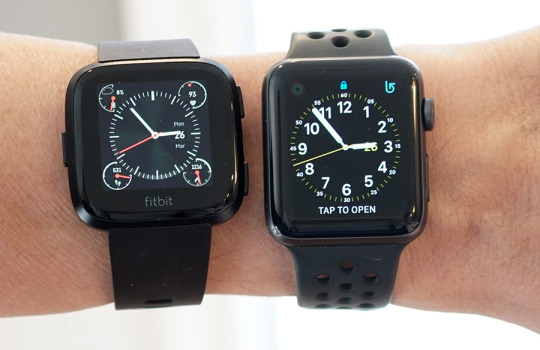
The Versa (left) is slightly wider, but shorter, than the 42mm Apple Watch.
Small is huge. Small means less obtrusive. Small means better suited for many women.
And small means stylish. You can get the Versa in black, silver, or peach aluminum; a “special edition” costs $30 more and comes in dark gray or rose gold. All of them look great, and you can make them look even greater by replacing the included silicone band with a leather, cloth, metal- mesh, or metal-links band.
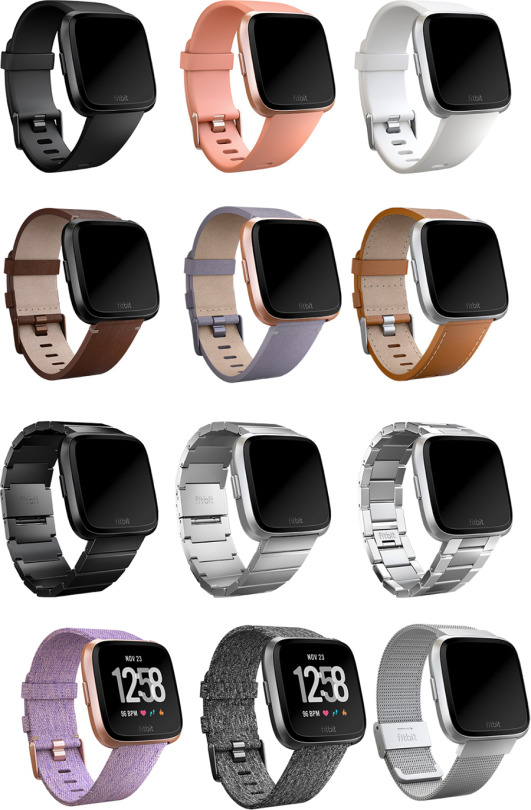
Here’s a sampling of some of the silicone, leather, cloth, and metal bands available.
You can swap bands without tools, although it takes practice. Even after 20 minutes, I never could get the leather band to go on.

Swapping bands involves fiddling with the spring-loaded release lever.
And here’s the truly great part: Fitibt says it goes “four-plus days” on a charge, but it always under advertises battery life. My review unit is happily ticking away on Day Six. Take that, Apple Watch, which you have to charge every single night (and therefore can’t use to track your sleep)!

You charge the Versa by snapping it into a new, spring-loaded stand.
You do, however, sacrifice something for the cheaper price and smaller size: built-in GPS. The Ionic has it, the Versa doesn’t. If you want to map your runs or rides, you have to take your phone with you; the Versa’s software grabs its GPS information from the phone itself.
On the U.S. base model, you also lose Fitbit Pay, which lets you pay for things with your wrist at wireless terminals. Alas, the list of recognizable participating banks are still limited — American Express, Bank of America, Capital One, Wells Fargo, and U.S. Bank. Chase is coming soon. If your credit card comes from one of those banks, and you care about this feature, it’s available for an additional $30 on the Special Edition.

The Fitbit Versa (right) lacks the Apple Watch’s weird bulge on the bottom.
The features
The Versa’s features are mostly identical to the Ionic watch’s, although the new operating system (coming to the Ionic later this year) greatly simplifies navigation.
The Versa has water resistance down to 50 meters, swim tracking and lap counting, 2.5 gigabytes for storing music to play (over wireless earbuds), and auto-recognition of 20 different exercises. It offers guided breathing sessions when you need to relax, and optional hourly reminders to get up and move around.
When it comes to tracking your health, the Versa is a champ. It tallies your steps, calories, and distance; flights of stairs you’ve taken; minutes of exertion; continuous heart rate; and your stages of sleep, which is remarkably accurate and informative.

The touchscreen is square and colorful and very bright.
Underneath, the heart-rate sensor has a third LED light, capable of detecting how much blood oxygen you’ve got (your relative SPO2). Someday, that statistic could provide early detection for conditions like atrial fibrillation or sleep apnea, which would be a huge deal for millions of people.
(Personal sob story: My favorite Fitbit is the incredibly slim, small Fitbit Alta. It does a great job of tracking my stats, including heart rate, during the day and night. But when a foot injury drove me to switch from jogging to stationary biking, I discovered, like many others, that the Alta wouldn’t record my heart rate during exercise! It either dramatically under-reported my pulse rate, or didn’t pick up a pulse at all.
Online, many people with that problem solved it by switching to the fatter Fitbit Charge 2 band. For me, that band did much better — but still sometimes underreported compared to a Polar chest strap. I’m happy to report that the Versa’s heart-rate monitor is dead on during exercise —within a beat or two of the chest-strap’s measurement. Every time.)
You can pay $40 a year to use Fitbit Coach: guided video workouts that play on the Fitbit website or on your smartphone. (They don’t play on the watch itself, although audio-only guidance is available.) There’s a huge variety of duration and intensity, no equipment is required, and Fitbit says that the workouts adjust their intensity based on your own feedback.
Versa the smartwatch
Is the Versa, in fact, a smartwatch at all? I guess it depends on how you define that term. Smartwatches from companies like Apple and Samsung usually offer features like these:
Choice of watch faces. Maybe you like digital, or analog, or elegant, or complicated. The Versa’s app store now offers dozens of faces. Unfortunately, you have to choose them from the phone app (not on the watch) — and making a new selection involves a very slow Bluetooth transfer.

Plenty of watch faces await.
Notifications. Smartwatches can notify you on your wrist whenever one of your phone apps is trying to get your attention (you choose which apps). That’s especially useful when incoming calls and texts arrive. On the Versa, you can’t freely reply or take a call, as you can on the Apple Watch. In May, you’ll be able to respond with canned shortcut responses, but only on Android phones (not iPhones).
Music. You can load about 300 songs onto the Ionic, for playback through Bluetooth wireless earbuds when you’re working out. But you must load them from your computer using a crude Mac or Windows app called Fitbit Connect; it shows only playlists, not songs or albums. There are also Pandora and Deezer apps, but they require a paid subscription. There’s no Spotify.
Voice assistants. On real smartwatches, you can speak to Siri or the Google Assistant, and hear spoken replies. The Ionic has no speaker or microphone, so it can’t do any of that.
An app store. Fitbit’s smartwatch app store has finally begun to pick up steam. There are now about 500 apps available to install on your Versa, including Starbucks, Strava, New York Times, Weather, and so on. They’re all fairly slow and very simple.
Still to come
Fitbit is working hard to make the Versa attractive to women. Starting in May, you’ll be able to record every detail of your menstrual cycle in the Fitbit app — intensity, symptoms, and, of course, dates. Thereafter, it will display a calendar depicting your predicted period week in pink, and fertility window in blue.
Plenty of phone apps do exactly this, but having it part of the Fitbit app makes a lot of sense, because it’s tied in to all your other health stats. Eventually, the company plans to incorporate this other data (heart rate, for example) into its calculations, for even better accuracy.
A semi-smartwatch
To be clear, the Versa is not a smartwatch in the Apple Watch or Samsung Gear sense. It’s not a premium piece of jewelry that runs incredibly fast, runs thousands of apps, has a voice assistant, lets you respond to calls and texts, offers magnetic charging, have its own cellular connection, and so on.
But the Versa’s specs — five-day battery life, a $200 price tag, and small, sweet looks — define a worthy category unto itself. You’ll really like this thing.
David Pogue, tech columnist for Yahoo Finance, welcomes non-toxic comments in the Comments below. On the Web, he’s davidpogue.com. On Twitter, he’s @pogue. On email, he’s [email protected]. You can sign up to get his stuff by email, here.
Read more
Exclusive: What Fitbit’s 6 billion nights of sleep data reveals about us Google Clips uses AI to snap pictures of your kids and pets — sort of Why I bought Honda’s plug-in hybrid mystery car Look up! A dozen ‘air taxi’ flying cars are readying for takeoff
from laptop3 https://ift.tt/2G8LFiK read more heah aware
0 notes
Text
Why your iPhone isn’t ringing and how to fix it
Do your friends and family constantly complain that you never answer their phone calls? Are you actively trying to avoid them? Well, if that’s the case, then this video isn’t for you. But if you do want to keep in touch with your loved ones but can’t figure out why your phone isn’t ringing when they call, I’ve got a quick tip that should solve your problem.
If you’re using Apple’s (AAPL) iPhone, there’s a good chance that you accidentally turned on its Do Not Disturb feature. When you do this, you automatically silence any calls you’d normally get and send them to your voicemail.
I’ve known more than a few people who have had this issue, including someone who’s probably watching this and turning red at the moment: Sorry Mom.
To turn off Do Not Disturb on the iPhone 6s, 7 or 8, simply swipe up from the bottom of the screen to pull up the Control Center. If you’ve got an iPhone X, you’ll need to swipe down from the top right corner of the display.
If Do Not Disturb is active, the crescent moon icon will be lit up white and the moon icon will look blue. You’ll also see a moon icon in the top right corner of the Home screen. To turn Do Not Disturb off, simply tap the icon and you should see a message at the top of the screen that reads “Do Not Disturb: Off.”
If Do Not Disturb is already off, your phone’s ringer might be silenced. To turn it back on you can flip the switch on the left side of your phone just above the volume buttons. If the switch has a red indicator showing, the ringer is being silenced. Move the switch to the off position and then turn up the volume on your phone to increase the sound of the ringer.
Your phone should now ring whenever you get a call.
Whether that’s a good thing or not depends on who’s calling.
More from Dan:
Facebook CEO Mark Zuckerberg breaks his silence about data leak
How to take back your data and delete your Facebook account
Facebook users don’t care about its myriad scandals
Email Daniel Howley at [email protected]; follow him on Twitter at @DanielHowley.
Follow Yahoo Finance on Facebook, Twitter, Instagram, and LinkedIn
from laptop2 http://ift.tt/2HZ1dC9 Read More Viral News
0 notes
Text
Zuckerberg press event [shell]

Facebook Founder and CEO Mark Zuckerberg in San Jose, California, U.S., April 18, 2017. REUTERS/Stephen Lam
Facebook (FB) CEO Mark Zuckerberg made his first public statements on Wednesday following revelations that the profile information of 50 million users was used without their knowledge or consent as part of a targeted advertising campaign to elect Donald Trump.
But instead of speaking to the press, or even hosting a Facebook Live video, as he has done in the past, Zuckerberg posted a message to his official Facebook account. In it, the CEO laid out the timeline for how users’ profile data fell into the hands of the voter-profiling company Cambridge Analytica, which created the ads for Trump.
“We have a responsibility to protect your data, and if we can’t then we don’t deserve to serve you,” Zuckerberg wrote. “I’ve been working to understand exactly what happened and how to make sure this doesn’t happen again. The good news is that the most important actions to prevent this from happening again today we have already taken years ago. But we also made mistakes, there’s more to do, and we need to step up and do it.”
Facebook’s latest scandal kicked off on March 17 when The New York Times published a piece revealing how theCambridge Analytica captured the profile information of 50 million Americans without their consent to create targeted advertisements aimed at ensuring Donald Trump won the 2016 election.
Cambridge Analytica obtained that user data through Aleksander Kogan, a lecturer at Cambridge University, who originally received it from Facebook via a personality test app connected to the Facebook Platform, a tool that allowed third-party apps to connect to users’ profiles and then snake their way through the profiles of those users’ friends without asking their consent. That capability has since be turned off.
Instead, of using that profile data for the personality test, though, Kogan shared it with Cambridge Analytica, which then used it to craft political ads for the Trump campaign.
“This was a breach of trust between Kogan, Cambridge Analytica and Facebook,” Zuckerberg said in his statement. “But it was also a breach of trust between Facebook and the people who share their data with us and expect us to protect it. We need to fix that.”
If the initial reports that Facebook had known that its users’ profile data was taken at least as far back as 2016 without coming forward wasn’t bad enough, the company then tried to deflect, saying that the matter wasn’t a data breach, but a third-party abusing their access to user profiles. And while that fact is true, no usernames or passwords were stolen, it didn’t do much to ease investors’ or advertisers’ concerns, or address the public’s trust in the social network.
Despite the growing controversy, neither Zuckerberg nor COO Sheryl Sandberg, the two faces of the company, offered any public statements on the issue until Zuckerberg’s message today. The only information from the social network came via its initial release about Cambridge Analytica and posts from lower level executives.
In his statement, Zuckerberg said his company would take three steps in preventing a similar issue from happening again. The first, he explained, was to audit all companies that had previously used the Facebook Platform prior to the company’s decision to limit access to users’ profiles to ensure there are no other such abuses. The CEO then said the company will further restrict access to users’ profile data beyond its current measures and provide a notice to all users about what apps are currently accessing their profiles.
Zuckerberg’s announcement is unlikely to quell calls for him or Sandberg to appear before Congress or British Parliament regarding the Cambridge Analytica fiasco. It’s also no likely to make investors or advertisers already wary of the recent scandal feel any more at ease.
The Cambridge Analytica matter follows the firestorm of criticism leveled at Facebook and other social media sites over the spread of fake news and advertisements on their platforms, some of which was created by Russian political interests seeking to disrupt the 2016 election. In the midst of that, Facebook and its cohort, which include Reddit, Twitter and YouTube, were repeatedly chastised for allowing so-called Alt-Right, Neo Nazis and other hate groups to freely post hate speech on their sites.
More recently, such sites have taken heat for allowing conspiracy theories about the Parkland High School shooting to circulate alongside factual news articles.
As part of his annual New Year’s statement, Zuckerberg pledged to improve Facebook by tackling issues like fake news and prevent foreign interests from using the social network to influence U.S. elections.
Unfortunately, it seems, the company and its CEO still have a long way to go before they get there.
More from Dan:
How to take back your data and delete your Facebook account
Facebook users don’t care about its myriad scandals
Email Daniel Howley at [email protected]; follow him on Twitter at @DanielHowley.
Follow Yahoo Finance on Facebook, Twitter, Instagram, and LinkedIn
from laptop2 http://ift.tt/2pvD7r7 Read More Viral News
0 notes
Text
Review of this week's No. 1 app: Human Anatomy Atlas 2018
Welcome to Pogue’s Rated:App series. Each week, I’ll install whatever is the No. 1 bestselling app on the iOS or Android store and review it, to save you the effort in case it’s a turkey!
This week, the No. 1 bestselling app on the iPhone app store, and the No. 2 app on the Google Play store, is Human Anatomy Atlas 2018.
Like most apps that hit No. 1, HAA is all about visuals; it gives you an interactive, incredibly detailed, medically accurate jaw-dropping 3-D view of the human body.
But unlike most apps that hit No. 1, I know why this app (which has been around for years) suddenly zoomed to the top of the list: It’s usual price is $25, but it went on “super sale” this week for $1. (They haven’t decided when the sale will end.)
Human Anatomy Atlas 2018 is a gigantic, pretty complex app. It’ll eat up 1 gigabyte of space on your phone, and take you some time to learn. Neither of those points would be an obstacle to the app’s target audience: med students and health care pros.
But at $1, this app is suddenly attractive to a much broader range of people. It’s pretty stunning.

Human Anatomy Atlas 2018 puts a colorful, non-smelly digital cadaver on your phone.
What it does
There are, as you may be aware, a number of different parts of the human body, so HAA 2018 offers several tabs that let you control how to begin your exploration:
Regions. Head/neck, abdomen, pelvis, knee, etc.
Systems. Skeleton, circulatory, nervous, respiratory, muscular, digestive, reproductive, etc.
Gross Anatomy Lab. By “gross,” they don’t mean “disgusting” here; they mean “general,” as in “general anatomy.” Here, the app presents a digital corpse lying before you; you can turn it, flip it, or zoom into it.
Cross sections. Here, you get slices (they look like MRI scans) — of the head, thorax, abdomen, or pelvis, from various angles.
Microanatomy. This tab offers close-up views of individual structures like the eyeball, tongue, and hair follicles.
Augmented reality. Here’s the best part, newly added to the Android version of the app (and already part of the iOS version): You can place your virtual corpse onto an actual table (or floor, or desk, or bed) in front of you, and walk around it, using your phone as a viewer. You can even push the phone inside the body, flying through it. It’s freaky and beautifully done and absolutely astonishing — and unbelievably useful, I’d think, to med students.

You really have to see the augmented-reality feature (in the video above, for example) to believe it.
In all of these views, you can tap a body part to dissect it, peeling away layers to see what’s underneath. It’s the cleanest, clearest, least stinky way to take apart a cadaver.
You can also tap a body part to read all about it, or hear its name pronounced.

Tap any structure to read about it, hear its name pronounced, or designate it a favorite part of the body.
There are also 128 quizzes, a testament to the app’s academic purposes. For example, you’re shown an illustration of the leg and asked to tap “the fifth metatarsal.”
Also on tap: Short videos (showing how muscles, joints, cells, organs, systems, and diseases work). Note, though, that you get only one or two examples in each of these video categories; you’re supposed to pay $20 to unlock the rest.

The videos are short, clear, and narrated.
You can also create 3D fly-through tours of your favorite body parts, or create a library of favorite bits, or annotate certain views by drawing on them (with a fairly feeble pen tool — no choice of thickness or color) or typing notes. You can also search for a certain anatomical feature, get help, or choose a different language (seven are available).
We’re talking ridiculously complete.
Get it?
The company behind this app, Visible Body, has been toiling away in Boston for 15 years, refining and refining its medically accurate illustrations of the human body. You may run across their stuff as part of free online classes, in special corporate software for companies like Johnson & Johnson or Medtronic, in textbooks from Pearson or McGraw Hill, and so on.

In Dissect mode, each time you tap a layer, it disappears.
If the app were still $25, I’d tell you that Human Anatomy Atlas is a great learning tool — if anatomy is part of your career.
But at $1, there’s enough magic in this app to recommend it to anyone. Like the human body itself, it’s sometimes icky, often mind-blowing, and always amazing in that it works so well.
David Pogue, tech columnist for Yahoo Finance, welcomes non-toxic comments in the Comments below. On the Web, he’s davidpogue.com. On Twitter, he’s @pogue. On email, he’s [email protected]. You can sign up to get his stuff by email, here.
Read more
Pogue reviews this week’s No. 1 most downloaded app: Sky Guide AR
The controversial Vero is this week’s David Pogue’s Rated:App Bitmoji is this week’s David Pogue’s Rated:App This week’s David Pogue’s Rated:App is on Facetune
from laptop3 http://ift.tt/2HRsrKL read more heah aware
0 notes
Text
How to take your data back from Facebook and delete your account
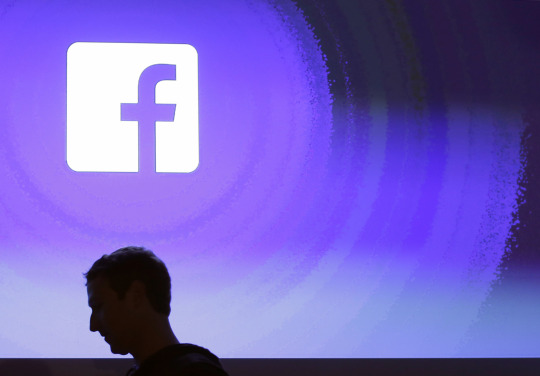
Want to protect your data on Facebook, or just plain get rid of your account? I’ve got you covered. (AP Photo/Marcio Jose Sanchez, File)
Want to protect your data on Facebook, or just plain get rid of your account? I’ve got you covered. (AP Photo/Marcio Jose Sanchez, File)
Facebook (FB), the world’s largest social network, is in hot water yet again. The company, which was already facing scrutiny for selling ads to foreign groups seeking to disrupt the 2016 U.S. presidential election and inadvertently facilitating the spread of fake news and conspiracy theories, is getting hammered for allowing the profile data of 50 million Americans to be used by political operatives without users’ consent.
The group that used the data, Cambridge Analytica, did so to create and spread highly targeted advertisements seeking to elect Donald Trump and discredit Hillary Clinton in the lead up to the presidential election. But the organization received that information through questionable means, according to the New York Times.
The entire mess might have you wondering how you can control who sees your data on Facebook, or even how to delete your profile entirely. If that’s the case, I’ve got you covered.
Here’s how to control your data on Facebook, and, if you’re particularly fed up, how to delete your account entirely.
The data Facebook uses
Facebook lays out exactly what data it collects to craft a profile about you that can be used to target you with specific ads on its Data Use Policy site. And, as you might expect, it collects everything. Any post, like, comment, picture, video, friend you’ve added, news article or inside joke you’ve put on Facebook can be used as a means to serve you advertisements.
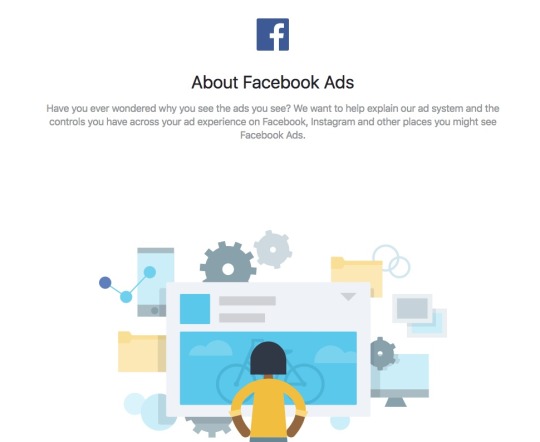
Facebook uses your personal information to match you up with various advertisements on the social network.
Facebook can also use data like your date of birth, location and other information to provide you with ads you might find relevant, and improve the site itself.
Think of it as the built-in cost of using a massive service like Facebook for free.
It’s not just the information you share on Facebook that gets scooped up, though. All of those sites and services you log into using your Facebook account have access to some of your data, and how they handle that info is up to them.
Then there’s the content friends post about you. Yes, all of those pictures, memes and stories your friends tag you in get collected by Facebook, too. And unfortunately, you don’t have control of that information since you didn’t post it.
It’s important to note that Facebook isn’t the only company that collects and uses your data like this. Google (GOOG, GOOGL) and Twitter (TWTR) also use information about you to determine which advertisements to show you and help advertisers better target their campaigns.
Controlling your data
Facebook considers information you share publicly to be fair game for use with targeted advertisements. And while you can change the visibility of some of your data such as posts and photos, information like your name, profile picture and cover photo, networks, gender, username and user ID (how apps identify you) are always considered public.
If you want to see fewer ads regarding a specific topic on Facebook, you can visit the Facebook Ad Preferences site. From here, you can control what kind of information Facebook thinks it knows about you. You won’t actually be able to delete that data, but you’ll be able to control the kinds of ads you see.
For example, Facebook recognizes that I’ve interacted with pages about action role-playing games, Hulu, the Wall Street Journal and others. If I no longer want to see ads about those topics, I can simply click the “X” icon in the top right corner of each interest.
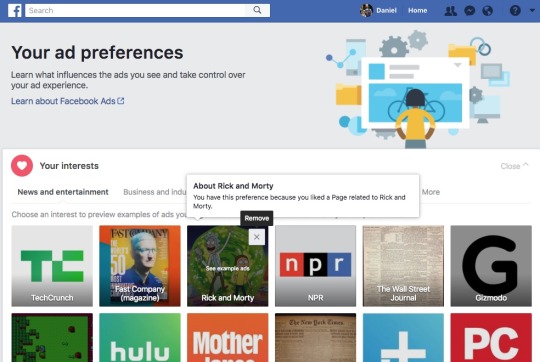
You can delete categories that Facebook thinks you have interest in to stop seeing ads on specific topics.
You can also remove yourself from categories that Facebook matches you up with that help advertisers serve you certain ads. Facebook, for instance, lists me as being an engaged shopper, commuter, console gamer and early adopter. I can, however, remove myself from those categories to stop seeing ads based on that content.
Similarly, you can choose to prevent Facebook from showing you online interest-based ads or ads on apps and websites by opting out of these settings.
Then there are apps including games and services like Spotify that can access your basic Facebook profile information. If you never want to use those services again, you can disable them from your Facebook account by turning off Facebook Platform applications. Once you do that, these outside apps will no longer have access to your profile data.

If you revoke access Spotify’s access to your Facebook profile, you’ll need to create a new Spotify login.
For apps like Spotify, which allows you to log in with your Facebook account, you’ll need to cancel your Facebook-based profile and start a new one with a standard login.
Deleting Facebook
Of course, if you’re completely at the end of your rope when it comes to Facebook, you can simply choose to erase your presence from the service by deleting your account. Before you do so, though, it’s worth noting that getting rid of your Facebook account also means you’ll be cutting yourself off from a large chunk of your online social circle.
You won’t be able to spy on that one guy who dumped you in high school or call out Brad when he tells you he was too sick to hang out last night, but still managed to post pictures of himself at the bar with Sharon.
If you’re willing to give that up, along with the ability to send and receive invitations to various parties, which is why I primarily use the service, then you can take the leap and say goodbye to your account.
Before you do that, though, you should know that deleting your account means saying goodbye to all of those photos and videos you’ve uploaded to the service over the years. To save those, you can download your Facebook archive by navigating to the Settings menu from the Facebook desktop site.
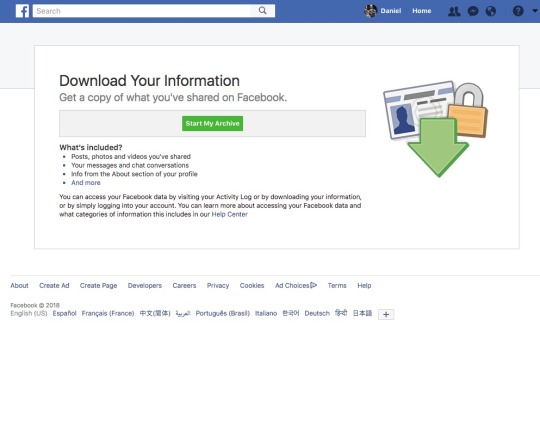
You might want to archive your Facebook data before you delete your account entirely.
Next, click “General” and select “Download a copy of your Facebook data” at the bottom of the page. This will ensure you have access to everything you’ve posted on the site since you originally joined.
Now you can delete your account. To do so you’ll need to follow this link, as Facebook seems to purposely make it difficult to end your relationship with the site.
Click “Delete my Account,” and you’ll see a pop-up window asking you if you’re sure you want to delete your profile. You’ll then need to enter your password and fill out a Captcha to confirm your decision.

Facebook seems to purposely make it hard to delete your account.
It could take up to 90 days for Facebook to fully delete all of the information you’ve uploaded to its servers. During that time, no one will be able to interact with your account.
Unfortunately, some things won’t be deleted during this process including posts you’ve been tagged in or messages you’ve previously sent to friends.
And that’s that. You’re now done with Facebook forever. Unless, that is, you’ve got Messenger, WhatsApp or Instagram, all of which are owned by Facebook.
Come on. You didn’t really think it would be that easy to leave, did you?
More from Dan:
Facebook users don’t care about its myriad scandals
Here’s Cortana’s March Madness bracket
Alexa predicts Villanova will win March Madness
How to live stream every March Madness game
Fitbit is dead set on taking down the Apple Watch
Email Daniel Howley at [email protected]; follow him on Twitter at @DanielHowley.
Follow Yahoo Finance on Facebook, Twitter, Instagram, and LinkedIn
from laptop2 http://ift.tt/2DFfbGN Read More Viral News
0 notes
Text
Facebook's users don't care about its myriad scandals
Facebook (FB) is mired in yet another major controversy. The social networking giant, and platform for your uncle to rant about how millennials don’t respect their elders, is facing scrutiny from lawmakers after the New York Times reported that data from 50 million Americans was used by a a third party group, Cambridge Analytica, to help target ads favoring Donald Trump in the 2016 presidential election.
At issue is the fact that the overwhelming majority of Facebook users involved didn’t provide permission to have their data harvested by Cambridge Analytica. Instead, the firm paid a consultant for the information who claimed to Facebook that he was using the data for academic purposes.
It’s a serious matter, one that could see CEO Mark Zuckerberg or COO Sheryl Sandberg called before Congress, but the average Facebook user likely couldn’t care less.

Despite its latest controversy, the average user is unlikely to leave Facebook. (image: Reuters/Stephen Lam)
Facebook is a utility
“We’ve reached a point in time where big companies like Google, Facebook, Apple, Amazon … we use them like utilities. They are just a fact of life now,” explained industry analyst Omar Akhtar with Altimeter.
Facebook currently has 2.13 billion monthly active users around the globe. 1.4 billion of those are daily active users, which means they log into the account at least once a day to see what’s happening with their friends and family. That’s a massive number of people using the social network.
What’s more, Facebook’s user base continues to grow. It’s daily active user number increased 2.18% quarter over quarter, according to its fourth quarter 2017 earnings report. But that included a 700,000 drop in the U.S. and Canada, which Facebook attributed to cleaning up the number of viral videos in users’ News Feeds.

Sheryl Sandberg, chief operating officer of Facebook Inc., could be called before Congress over the company’s latest scandal. (image: Bloomberg)
That was despite all of the noise surrounding fake news, Russian interference and the general acrimony surrounding the 2016 presidential election in the U.S. and the Brexit campaign in England.
In other words, these kinds of scandals don’t seem to trickle down as much to the average Facebook user. Sure, the stock was down 6.77% at the closing bell on Monday, but how many people actually saw the news and read it on Facebook? It seems as though revelations like the Cambridge Analytica scandal only spook advertisers and investors.
As Akhtar explained, Facebook has reached the point in its lifespan where the average person will stop using it because it no longer provides them enough utility instead of the scandals associated with the company.
The ultimate example of this is Uber, which, despite what seems like a near-endless parade of scandals ranging from the exit of founder Travis Kalanick to its legal battle with Google, still managed to increase its quarterly revenue by 61%. And that’s unlikely to change even with the news on Monday that it was suspending its self-driving car testing due to an accident that resulted in the death of a pedestrian.
Perhaps a bigger issue for Facebook, Akhtar explained, is whether people actually enjoy using the social network. “I think the number of people who enjoy Facebook for what it is, is at the least not growing.”
Facebook is clearly aware of its users’ satisfaction. The company has been working to improve its various feeds and ensure that they see more posts from people they care about. But that can also backfire, as they’ll end up reading the same kind of vapid updates from people showcasing their vacations, birth announcements and poorly-written political diatribes.
Teens are Facebook’s real problem
The social network also has one other creeping problem: teens. Younger users have been moving away from Facebook in favor of more visually stimulating apps like Snapchat (SNAP) and Instagram.
I’ve personally left much of Facebook behind in favor of Instagram, as the latter affords me a break from the day’s news and a chance to look at pictures and videos of puppies and kittens without having to see a high school friend’s latest take on the immigration debate.
Despite the fact that teens may be leaving Facebook, though, it’s unlikely that users, in general, will leave the service en mass.
“Facebook is so deeply enmeshed in our digital activity that it’s hard to be online and not have a login,” Akhtar said. “Think of how many apps use Facebook verification.”
So while the social network will have its name in headlines for weeks to come, chances are many people will continue to read those same stories on Facebook itself.
More from Dan:
Here’s Cortana’s March Madness bracket
Alexa predicts Villanova will win March Madness
How to live stream every March Madness game
Fitbit is dead set on taking down the Apple Watch
Email Daniel Howley at [email protected]; follow him on Twitter at @DanielHowley.
Follow Yahoo Finance on Facebook, Twitter, Instagram, and LinkedIn
from laptop2 http://ift.tt/2IyMRtn Read More Viral News
0 notes
Text
'God of War' could be 2018's first must-have game

Kratos returns in ‘God of War’ for the PlayStation 4.
The God of War has returned. Kratos, the Ghost of Sparta who destroyed all of the gods of Olympus in his quest for revenge for the deaths of his wife and daughter, is making his first appearance on Sony’s (SEN) PlayStation 4 next month, and it’s going to be huge.
But the living embodiment of a nuclear-powered buzzsaw isn’t what he once was. “God of War,” which comes out April 20, sees the once vengeance-driven son of Zeus and a mortal man take on a more subdued demeanor.
He’s older and wiser, and it certainly shows. From the way the ashes, which he was cursed to wear, have begun to fade from his skin, to how he approaches combat, this is a more deliberate Kratos than the killing machine that battled his way to the top of Mount Olympus in the original “God of War” trilogy.
I played the first two and a half hours of “God of War” during a preview event hosted by Sony, and left more excited to play the final game than ever before.
Aging gracefully
The aged Kratos we meet in “God of War” has the weather look of a man nearing the twilight of his days. His face now sports a long, grey beard and his trademark tattoo is fading with age. My first impression of the Spartan was that he had the kind of vibe I got from the aged Wolverine in “Logan.”

A tremendous amount of time has passed between ‘God of War III’ and the new ‘God of War,’ and it shows on Kratos’ aged face.
“There was a first kind of discussion we had where I said it was kind of like an athlete in the off season,” explained “God of War” creative director Cory Barlog. “There were versions of Kratos where he let himself go a little bit.”
That’s not to say he’s weak and feeble. This Kratos still packs one heck of a punch. And his brutality is still well intact when he needs to unleash it. But he’s also not the walking vial of nitroglycerin he once was.
Much of that has to do with the fact that Kratos is once again a husband and father. At least, he was prior to this game’s opening scenes where we find Kratos laying his wife to rest. His son, Atreaus is still young and inexperienced, and Kratos, now a single parent, is tasked with teaching him everything from how to properly hunt for food to how to defend himself properly.
It’s clear that Kratos isn’t exactly comfortable in his role as a loving caregiver. Moments like his initial anger at his son over a missed shot at a deer the two were hunting show the Spartan’s rage nearly boil over, only to subside into instructions punctuated through his gritted teeth. The love, though, is certainly there. In another scene, Atreaus tells Kratos not to leave him behind again following a fight, to which Kratos replies, “I won’t.”
The lessons Kratos is imparting on his son, are especially important in “God of War’s” new setting among the frozen Scandinavian forests of Midgard where the Norse gods reign. The change is a welcome one from the previous “God of War” trilogy, which revolved around the mythology and locations of the Greek gods. And Sony Santa Monica Studios has, based on my brief time with the game, done an excellent job bringing this new game world to life.
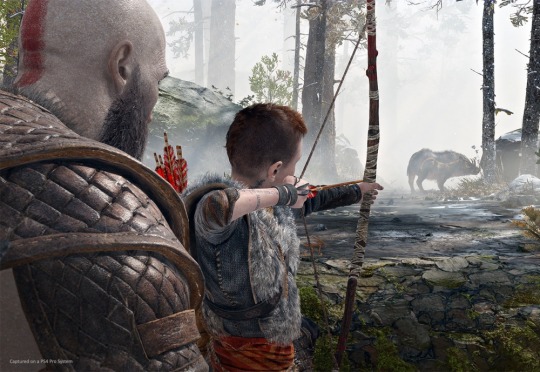
As a father, Kratos has to work to teach his son how to handle himself in the dangers of Midgard.
The forest and cliffs surrounding the game’s opening hours feel alive with animal life and look stunning, particularly when viewed with the PlayStation 4 Pro and a 4K, HDR television. At one point during my demo playthrough I stood still and just listened to the sound of birds and the wind whipping through the trees.
Old man strength
Of course, this wouldn’t be a “God of War” game without some satisfyingly, ferocious combat, and the latest title in a franchise known for its over-the-top battles delivers. The new-look old Kratos doesn’t have his trademark blades chained to his forearms anymore. In its place the Spartan now uses his Leviathan Axe, which lets him cut through foes using both weak and strong attacks.
Strong attacks bounce your enemies into the air allowing you to juggle them and leaving them stunned, while you beat them down. Weak hits let you deal out damage and keep your opponents off balance so they can’t retaliate against you.

Kratos now uses his Leviathan Axe instead of his trademark chain blades.
You can also throw the Leviathan Axe at enemies and then recall it similar to Thor’s hammer, Mjolnir. Throw the axe at certain objects and you can even freeze them in place. As you can imagine, that skill also comes in handy when solving “God of War’s” puzzles.
Interestingly, the first hours of “God of War” don’t feature the series’ usual massive set pieces. At the outset of “God of War III,” for instance, you’re climbing Mount Olympus alongside Titans the size of skyscrapers.
By contrast, this new “God of War” has you scrambling up hills and taking on the occasional troll. I have no doubt those “Oh my God!” moments will happen later in the game, though.
Everything about this “God of War” has a more intimate feel than the series’ prior entries. Even the camera angle, which has you up close to Kratos looking over his shoulder, helps ground the action more than ever.
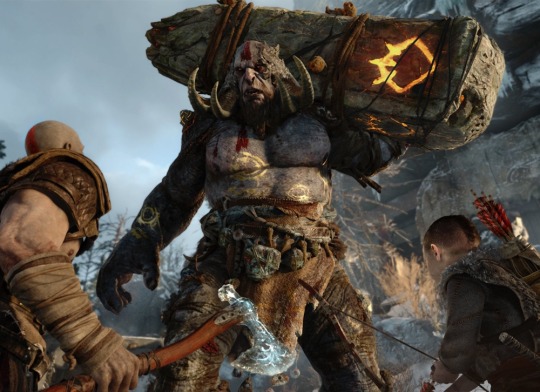
Atreaus will help Kratos in battle, but the demigod still does the heavy lifting.
This older Kratos is a far more thoughtful demigod than before, and it shows in the way he evaluates situations, whether it’s trying to protect his son Atreaus from having to fight other living humans to how he mourns his wife.
Barlog says that the Kratos from the first trilogy felt like he was the digital personification of the developers’ college days. He was impulsive, wanted to stick it to authority figures and was all for going for bigger and crazier battles.
An enormous amount of time has passed since his days of fighting the Greek gods. Barlog explains that Kratos now feels more like a man who understands what’s important in life and explores the world through the lens of someone who wants to hold on to those things.
And yet, he’s still Kratos, the demigod who destroyed Olympus. Which means we’re sure to see flickers of the Ghost of Sparta when “God of War” hits store shelves next month. And I can’t wait.
More games converage:
‘Kirby Star Allies’ review: How to make friends and eat them
Despite Trump’s meeting, video games and violence still don’t add up
‘Far Cry 5’ preview: Exploring cults and terror in the American West
The 10 best iPhone and Android games of the month
Email Daniel Howley at [email protected]; follow him on Twitter at @DanielHowley.
Follow Yahoo Finance on Facebook, Twitter, Instagram, and LinkedIn
from laptop2 http://ift.tt/2FLqq6o Read More Viral News
0 notes